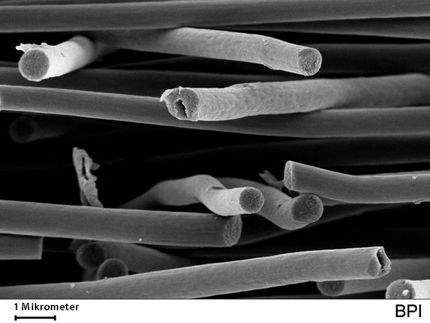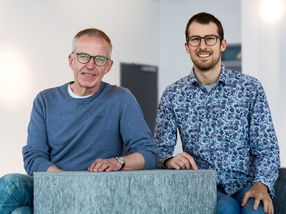Research paves way for new composite materials
Advertisement
Northwestern University researchers have developed a process that promises to lead to the creation of a new class of composite materials -- "graphene-based materials." The method uses Graphite to produce individual graphene-based sheets with exceptional physical, chemical and barrier properties that could be mixed into materials such as polymers, glasses and ceramics. The Northwestern team, led by materials scientist and physical chemist Rod Ruoff and composed of chemists, physicists and engineers, reported the results of their research in Nature.
"This research provides a basis for developing a new class of composite materials for many applications, through tuning of their electrical and thermal conductivity, their mechanical stiffness, toughness and strength, and their permeability to flow various gases through them," said Ruoff, professor of mechanical engineering in the McCormick School of Engineering and Applied Science. "We believe that manipulating the chemical and physical properties of individual graphene-based sheets and effectively mixing them into other materials will lead to discoveries of new materials in the future."
The Northwestern team's approach to its challenge was based on chemically treating and thereby "exfoliating" graphite to individual layers. Graphite is a layered material of carbon with strong chemical bonds in the layers but with moderately weak bonds between the layers. The properties of the individual layers have been expected to be exceptional because the "in-plane" properties of graphite itself are exceptional, but until now it was not possible to extract such individual layers and to embed them as a filler material in materials such as polymers, and particularly not by a scalable route that could afford large quantities.
Most read news
Other news from the department science

Get the chemical industry in your inbox
By submitting this form you agree that LUMITOS AG will send you the newsletter(s) selected above by email. Your data will not be passed on to third parties. Your data will be stored and processed in accordance with our data protection regulations. LUMITOS may contact you by email for the purpose of advertising or market and opinion surveys. You can revoke your consent at any time without giving reasons to LUMITOS AG, Ernst-Augustin-Str. 2, 12489 Berlin, Germany or by e-mail at revoke@lumitos.com with effect for the future. In addition, each email contains a link to unsubscribe from the corresponding newsletter.





























































